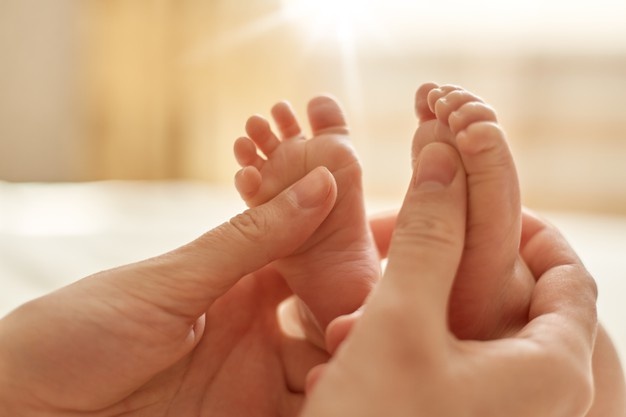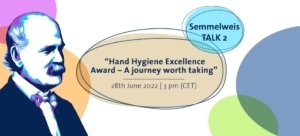On a global scale, infections are the third leading cause of neonatal mortality.
Therefore, a focus on careful hand hygiene practice plays a valuable part in infection prevention strategy, especially at the newborn ward. In the neonatology unit of the General Hospital Vienna/Medical University Vienna, an evidence-based, AI-enhanced quality assurance system provides immediate visual feedback on hand hygiene practice, both for parents and the clinical staff.

(c) Judith Rittenschober-Böhm
Dr. Judith Rittenschober-Böhm, MD, PhD works as a senior physician in the neonatology unit of AKH/Medical University Vienna, Austria’s largest hospital. With a total of 50 beds, AKH’s neonatology unit has two intensive-care and two intermediate-care wards as well as one post-partum support ward. Among the 800-900 high-risk and premature births annually, about 180 are children under 1000 grams. The General Hospital Vienna thus has the largest neonatology department in Austria.
In clinical practice, as well as in research, the focus of Dr. Rittenschober-Böhm, PhD in immunology, is on hospital-acquired and perinatal infections where hygiene issues are part of that focus.
Neonatology – a department where hygiene is most relevant
“Neonates are particularly vulnerable”, explains Dr. Rittenschober-Böhm. “The immaturity of their immune system makes them predisposed for infections; and their thin skin does not work that well yet as a protective barrier against diseases. In addition, neonates are subject to multiple types of invasive procedures such as catheterization and intubation, which are major risk factors.” Because perinatal infections are difficult to avoid, it’s obligatory for the staff to concentrate on prevention of HAI.
According to Dr. Rittenschober-Böhm, there are two target groups to address with technology-enhanced training. Clinical staff is one of them – physicians, nurses, and physiotherapists. Parents are the second, similarly important stakeholder group.
Key factors in hospital hygiene
The number one factor is about the “moments of hand hygiene”. Staff needs to be reminded of the necessity to practice hand hygiene in situations before and after contact with every patient. “However, the second factor is also important”, says the expert: “How well are hands disinfected?” Disinfection solutions are transparent, so it is nearly impossible to say whether the hands are safe and clean or not.
Patient safety is paramount
“Patient safety is of strategic importance in our unit, and the application of modern methods on the path towards achieving best results is supported by Prof. Berger, the head physician of our unit”, outlines Dr. Rittenschober-Böhm. Together, they have ordered two Semmelweis Scanners from HandInScan. These systems visualize the effects of the individual hand hygiene procedure in an easy-to-handle process which takes only 30 seconds.
Teaching parents

(c) Hand in Scan
Both, parents and staff, are target groups for the use of these scanners. Parents of newborns in neonatology, who are integrated into nursing activities in the unit, are typically highly motivated to engage, because they will do anything to support their children. However, to do so, they need to know the necessary steps as well as the correct amount of disinfectant to perform effective disinfection, which is obviously not easy. “In our unit, we train parents from the first day on, how they effectively disinfect their hands”, explains Dr. Rittenschober-Böhm. “In our intensive care wards, we use the Semmelweis Scanners for this training. The visual performance feedback parents receive from the scanners regarding the quality of their disinfection procedures is extremely valuable to them.” Parents are shown which areas they have neglected. “The feedback from parents using the scanners was very positive”, says the expert.
Addressing staff
The other target group is of equal importance – nurses and physicians. “Their challenge is that they will have practiced hand hygiene for years as part of their everyday routine; this may lead to a lack of reflection about the quality of that process”, underlines Dr. Rittenschober-Böhm. Typical areas which are disinfected with a lower degree of diligence are the back and the thumb of the dominating hand which is visualized very well by the scanners. Maintaining awareness is crucial: humans – team members – are needed to keep reminding their colleagues of the availability of the scanners.
Re-training of the staff by the hospital hygiene managers is currently carried out with a conventional method. “The scanner is a useful alternative which would allow this procedure to be carried out faster and more elegantly”, according to the expert.
Combination of technology and human nudging
Avoiding hospital-acquired infections is a strategic goal for the General Hospital Vienna as well as the major aim related to the Semmelweis Scanners in neonatology. “Raising awareness on this topic continuously, like posters to remember parents and staff, is one of the key measures in achieving our goals. The Semmelweis System is a highly valuable tool for performance efficiency checks”, summarizes Dr. Rittenschober-Böhm.
About HandInScan
HandInScan develops industry-leading training systems proven to significantly improve hand hygiene behaviors that eliminate the spread of infectious disease. This is accomplished through strategic partnerships with leading global hand hygiene experts in combination with patented AI technology. The result is a user-friendly system for educating, reporting, and improving life-saving processes. Semmelweis Systems are being used in more than 20 countries worldwide. For more information about the solutions, visit https://www.handinscan.com/eu/ and follow on LinkedIn and Twitter.
This articel is based on a sponsoring of HandInScan.




